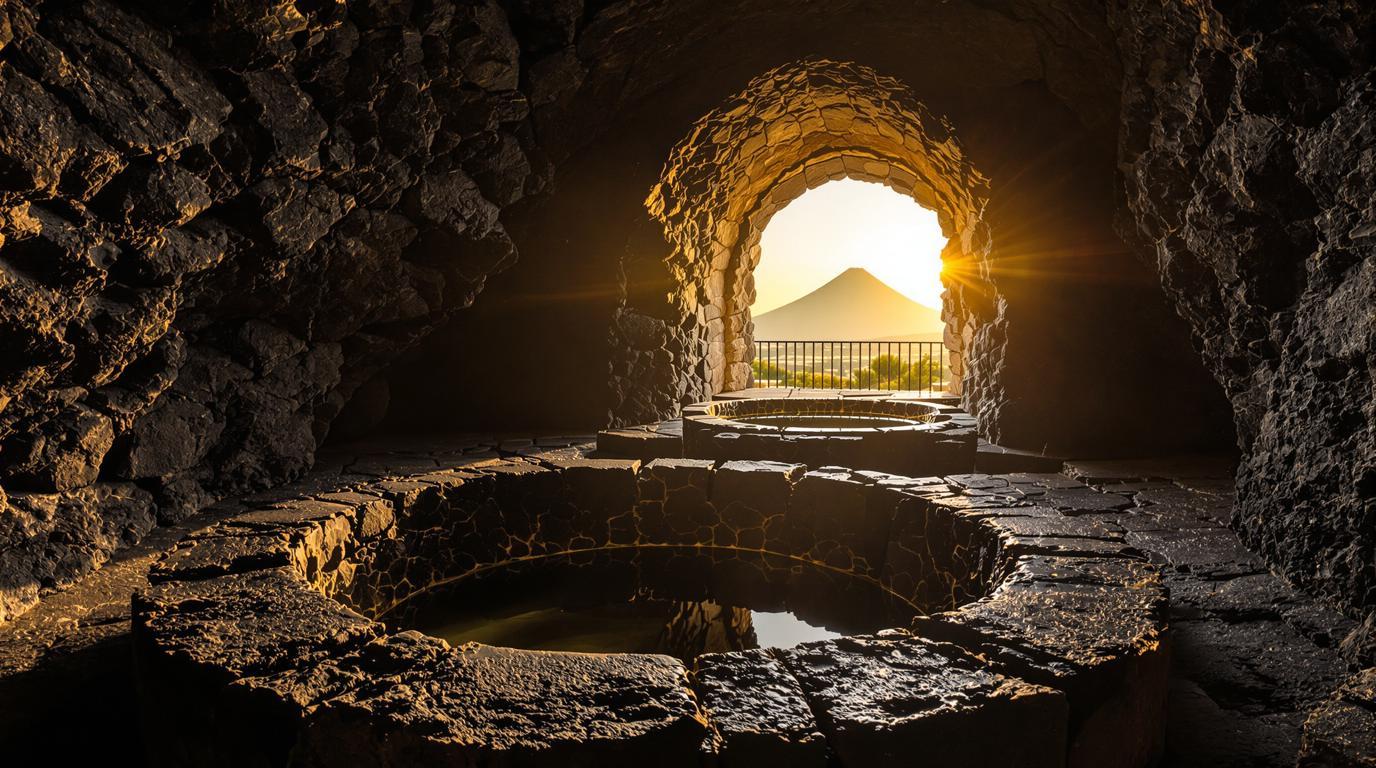I stand at the edge of a forgotten vineyard in Sicily’s rugged interior, where gnarled 200-year-old Nerello Mascalese vines twist from volcanic soil that once flowed as molten lava from Mount Etna. The vineyard owner, Salvatore, gestures toward the distant smoking crater and whispers, “Qui, la montagna decide tutto” – here, the mountain decides everything. This delicate relationship between volcano and vintner has created one of Italy’s most overlooked wine regions, where ancient traditions survive just a two-hour drive from Palermo’s tourist-filled streets.
Where fire meets vine: Sicily’s volcanic wine route
While tourists flock to Sicily’s coastal resorts and Greek ruins, the island’s eastern slope harbors a 1,000-year winemaking tradition that nearly vanished during the 20th century. Only recently have a dedicated group of small producers revived these high-altitude vineyards, some planted at dizzying 3,300 feet where snow can dust the vines in winter while the volcano smolders above.
Unlike the sun-baked fields producing Sicily’s better-known wines, Etna’s viticulture exists in a microclimate where cool mountain air extends the growing season by weeks, creating wines with remarkable complexity and mineral depth. The traditional bush-trained vines, some predating the phylloxera epidemic that devastated European vineyards in the 1800s, stand as living archaeological treasures.
Uncovering Etna’s viticultural secrets
The ancient palmenti of Castiglione di Sicilia
In the medieval village of Castiglione di Sicilia, narrow stone streets wind upward to reveal carved lava rock basins where generations of winemakers once crushed grapes by foot. These palmenti—primitive wineries carved directly into volcanic stone—date back to the 16th century and remained in use until the 1960s. Today, local guide Maria Torrisi leads visitors through these archaeological sites, occasionally unlocking private family palmenti preserved in centuries-old homes.
“My grandfather would bring our entire family here each September,” Maria explains, demonstrating how feet would crush grapes in the upper basin while juice flowed through channels to fermentation chambers below. “The children would play in the leftover grape skins, coming home purple from head to toe.”
The ghost winery of Solicchiata
Beyond tourist maps lies the hamlet of Solicchiata, where crumbling stone buildings reveal Italy’s oldest wine research facility. Founded in 1868 by Baron Felice Spitaleri, this pioneering estate once experimented with French varieties decades before “international grapes” became fashionable. The abandoned winery’s massive chestnut barrels still line walls adorned with handwritten production notes spanning 150 years. Visit on weekday mornings when caretaker Giuseppe occasionally admits curious visitors who discover his vegetable garden outside the historic cellar door.
Tasting liquid history in mountain trattorias
Skip the formal winery tastings and instead head to Trattoria Nunzio in the village of Linguaglossa, where the unassuming dining room serves as the unofficial gathering place for local winemakers each evening. The wine list—scrawled on a chalkboard and organized simply by “young” and “old”—offers rare bottles from nearby producers at prices that would shock visitors from more established wine regions.
Order the pasta alla Norma, where locally grown eggplant and ricotta salata complement Etna Rosso’s bright acidity and subtle smokiness. The wine’s characteristic notes of wild strawberry, volcanic minerals, and Mediterranean herbs create a sense-memory that will transport you back to Sicily long after you’ve returned home.
Essential guidance for Etna explorers
Timing your visit
Plan your exploration for mid-May through early June when wildflowers carpet the volcanic slopes and temperatures remain moderate. This shoulder season offers another advantage: winemakers have time for impromptu tastings before summer tourism peaks. Autumn harvest (late September through October) brings energy to the region, though reservations become essential.
Transportation realities
While public buses connect major towns, the winding mountain roads and remote vineyard locations make a rental car practically essential. Base yourself in Linguaglossa or Randazzo rather than coastal Taormina to minimize daily driving. Many unmarked dirt roads lead to the most interesting wineries—consider arranging a local driver through your accommodation if comfortable navigation concerns you.
Where volcano and vineyard teach patience
As afternoon light filters through chestnut forests surrounding a time capsule reminiscent of France’s medieval villages, I’m reminded that Etna’s vineyards offer something increasingly rare: a landscape where nature still dictates the rhythm of human endeavor. Unlike regions where technology has tamed agriculture, here the volcano’s unpredictability continues shaping wines that could come from nowhere else on earth.
In nearby towns that recall Spain’s secluded medieval villages with their Gothic treasures, local winemakers have preserved traditional growing methods alongside ancient religious traditions that shaped rural European life for centuries. These connections to the past offer the modern traveler something far more valuable than photogenic landscapes—a chance to witness living agricultural history continuing despite the modern world’s rapid transformation.
